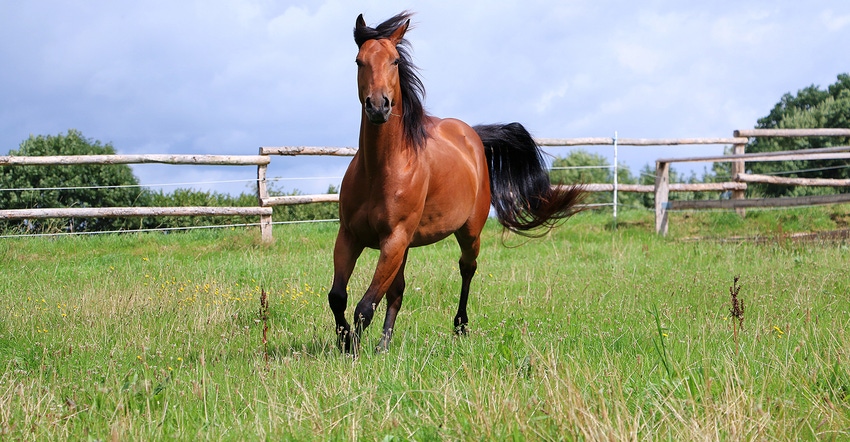December 13, 2018

While the weather is changing, and the seasonal threat is diminishing, concern about equine infectious anemia remains in Colorado. That was brought home with the announcement of the fourth case of an animal infected with the disease.
Recently, the Colorado Department of Agriculture’s State Veterinarian’s Office was notified of the new case testing positive for the disease. The horse was tested for routine movement purposes in Fremont County, where it is currently under quarantine order.
The investigation is ongoing, but it appears to be unrelated to the prior three cases of EIA reported in the state this year. The initial test was completed at Colorado State University’s Veterinary Diagnostic Laboratory in Rocky Ford, with the confirmatory test completed at the National Veterinary Services Laboratory in Ames, Iowa, in early December.
Keith Roehr, Colorado state veterinarian, notes that the current risk to the general equine population is low, given that the fly-vector season is ending in the state. “This disease occurrence also highlights the importance of disease prevention practices, such as not sharing needles, syringes, tack and equipment along with routine testing for EIA,” he adds.
A negative EIA test — also called a Coggins test — is required to cross state lines in the United States. And for all equestrian shows, rodeos, fairs and other events, it is recommended to consider requiring a negative Coggins for entry, even if horses have not crossed state lines. And CDA notes that Coggins tests are recommended as an important component of a prepurchase exam.
You can learn more about the disease at CDA’s EIA website; visit colorado.gov and search “EIA” for a range of resources. You can also search “livestock health” at the site to get guidance on all reportable diseases for the state.
Here’s an update on the three prior cases of EIA reported in the state:
August 2018 EIA investigation. The index premises in Weld County and two associated premises have been released from their quarantine and hold orders. One hundred forty-nine exposed horses have been located in Colorado (of the 149 that were determined to be in the state) at 66 different locations. Fifty-eight hold orders have been lifted in Colorado; eight hold orders remain in Adams, Boulder, Huerfano, Jefferson, Larimer and Weld counties until final testing is completed.
September 2018 EIA investigation. The index premises and associated premises have been released from their quarantine and hold orders after all horses tested negative for EIA.
November 2018 EIA investigation. All associated horses have tested negative for EIA and have been released from their hold orders.
Equine infectious anemia FAQs
Here are some commonly asked questions about EIA:
What is equine infectious anemia? Equine infectious anemia is a viral disease spread by bloodsucking insects, inappropriate use of needles, or other equipment used among susceptible equine animals such as horses, mules and donkeys. Horses may not appear to have any symptoms of the disease, although it can also cause high fever, weakness, weight loss, an enlarged spleen, anemia, weak pulse and even death.
How is it spread? It is spread most commonly through blood by biting flies, such as horseflies and deerflies. It is important for horse owners to use fly control methods to reduce disease transmission for EIA and other equine viruses.
What happens to an infected horse? There is no cure for the disease, so infected animals must be quarantined for life or euthanized.
Is there a danger to people? No. The disease can only be spread to horses, mules and donkeys.
Is the disease common? No. There has only been a small number of cases in the United States, although the disease exists in other parts of the world.
How is the disease controlled? Equine infectious anemia is a disease for which horses must be tested annually before they can be transported across state lines. The test for EIA is commonly called a Coggins test.
Source: Colorado Department of Agriculture
You May Also Like




